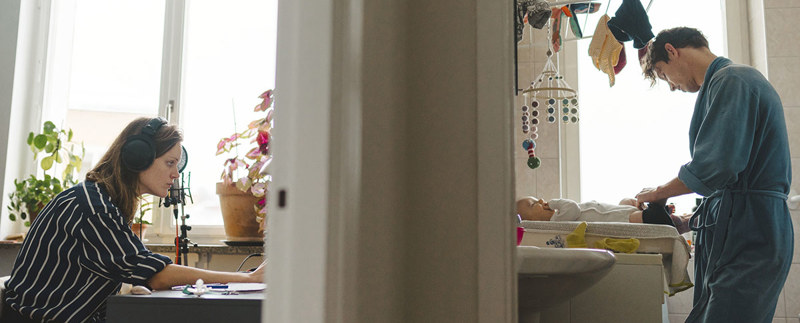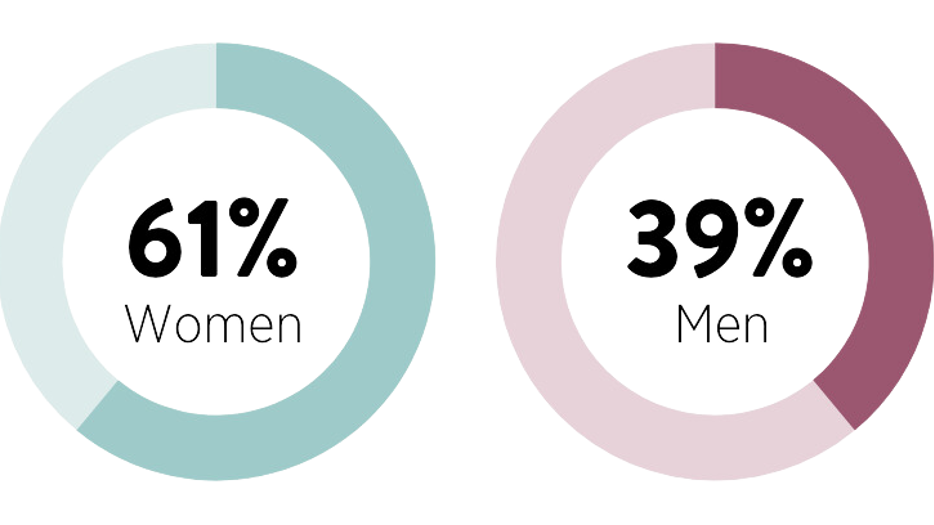Sub-goal 4: Even distribution of unpaid housework and care work
Women still largely take responsibility for unpaid household and care work. They take more parental leave and spend more time caring for children. Women and men provide care, but in different ways. In the home, it is primarily women who clean, cook, and do laundry, while men take care of the car, handle technology, and manage finances.

The fourth gender equality subgoal is about achieving an equal distribution of unpaid household and care work. Women and men should share equal responsibility for household chores and have the opportunity to give and receive care on equal terms.
Women do more unpaid housework
Women and men spend different amounts of time on unpaid household work. This is evident from Statistics Sweden's survey on the time use of Swedes. Generally, women spend more time cooking, cleaning, and doing laundry, as well as devoting more time to caring for their own children. These activities occur daily and require a significant amount of time.
Instead, men spend more time on paid work, maintenance, and repairs of the home and vehicles. Similar patterns have been shown by Statistics Sweden in previous surveys on time use. Many household activities, such as shopping or gardening, are equally divided between women and men. The same applies, for example, to helping with homework, playing, and attending children's activities.
Overall, the assessment is that the time men spend on maintenance and repairs does not match the time women spend on household chores. Therefore, women perform more unpaid housework than men.
Continued differences in parental leave usage
As a measure to equalise differences between women and men, the focus has primarily been on parental leave. Today, 90 parental days are reserved for each parent. However, men still take less parental leave than women and use parental leave to a lesser extent than women. Men also use the temporary parental benefit (sick child care) to a lesser extent than women.
There are also differences among different groups. The men who take the most equal parental leave are those who are highly educated, have good incomes, are Swedish-born over 25 years old, and work in the public sector. Men's usage of parental leave has increased over time, while women's has decreased, especially for those women who have the opportunity. Single women with low education and income often need to take all parental leave days during the child's first year.

In addition to using the temporary parental benefit more than men, women are also on parental leave for longer periods than men. This is because women, more than men, spread out their parental leave days and take unpaid leave instead. This is also influenced by the rules of the parental insurance. In practice, mothers and fathers have different conditions for being on parental leave because the rules vary during the periods that women and men choose to be on leave.
Care work affects women's health and economy
Nearly one-fifth of the population regularly provides care to a family member. The work of providing unpaid care to elderly or sick relatives or a child with disabilities is relatively evenly distributed between genders but differs in terms of the type of care. It is more common for women to take overall responsibility for social interaction and supervision, while men engage in more practical tasks. Women who provide a lot of care also experience poorer well-being as it affects their social life, finances, and health.
Paid and unpaid care work affect each other. Women are more likely to work part-time than men to care for children and the elderly. Both women and men try to reduce younger children's time in daycare, but women, unlike men, feel more stressed about achieving this. If eldercare is reduced, the unpaid caregiving workload may increase. The degree of household work is also affected for those offered only part-time employment.
The RUT deduction (a tax deduction system in Sweden designed to encourage household services) has increased both women's and men's participation in the labor market by reducing the time spent on cleaning and other household chores. However, the effects of the RUT deduction on the distribution of unpaid household and caregiving work and economic equality are still unclear.
The revised care allowance for children with disabilities has so far had a marginal effect on the distribution of care for children with disabilities. The caregiver's allowance, which can be used when caring for severely ill relatives, is still mainly utilised by women.
What is needed for a more even distribution of unpaid housework and care work?
The goal of achieving an equal distribution of unpaid household and care work has long been a neglected area in terms of political actions, and progress has almost come to a standstill. The National Board of Health and Welfare is currently developing a national strategy for relatives who are caregivers or who support elderly relatives.
The Swedish Gender Equality Agency highlights several areas for development:
- Continued efforts to achieve an equal distribution of care for younger children, including through a new gender equality bonus.
- Increased opportunities for women with childbirth injuries to receive sick leave while their partner takes parental leave and assumes responsibility for caregiving.
- Enhanced social security protection for relatives providing care to an elderly parent or other close relative.
- Systematic data collection is needed to monitor developments, including regular time-use surveys.
Publication date: 7 January 2022
Last updated: 4 July 2024
